Legends of the Old Corps: Gustav Hasford and the “Snuffies”
Guys, I’ve been in a hell of a writing slump. But a couple weeks back I unexpectedly encountered a Marine who served in Vietnam with Gustav Hasford, author of The Short-Timers, which became Full Metal Jacket. That movie drove me and thousands of others into the Marine Corps in the 80s and 90s. I wound up interviewing six of Hasford’s brothers who served with him in Vietnam, and the backstory is even more interesting than his book and the movie it spawned.
If you’re interested in the history of the Vietnam War, or read The Short-Timers, or saw Full Metal Jacket, you might enjoy this article. The intro and a link to the full article are below, hope you enjoy it.
—————————————————-
It was April, height of the COVID crisis. I was cruising a Facebook photography forum, bored out of my skull, and saw a photo posted by Marine combat photographer Dennis Fisher. It was him in Vietnam with a camera and M3 Grease Gun, taken by a USMC combat correspondent named Earl Gerheim in Phu Bai after the Tet Offensive. As a former Marine, Army combat vet, photographer, military history fanatic, fan of the old Grease Gun and “writer, kinda,” I thought, “Wow, that’s cool.”
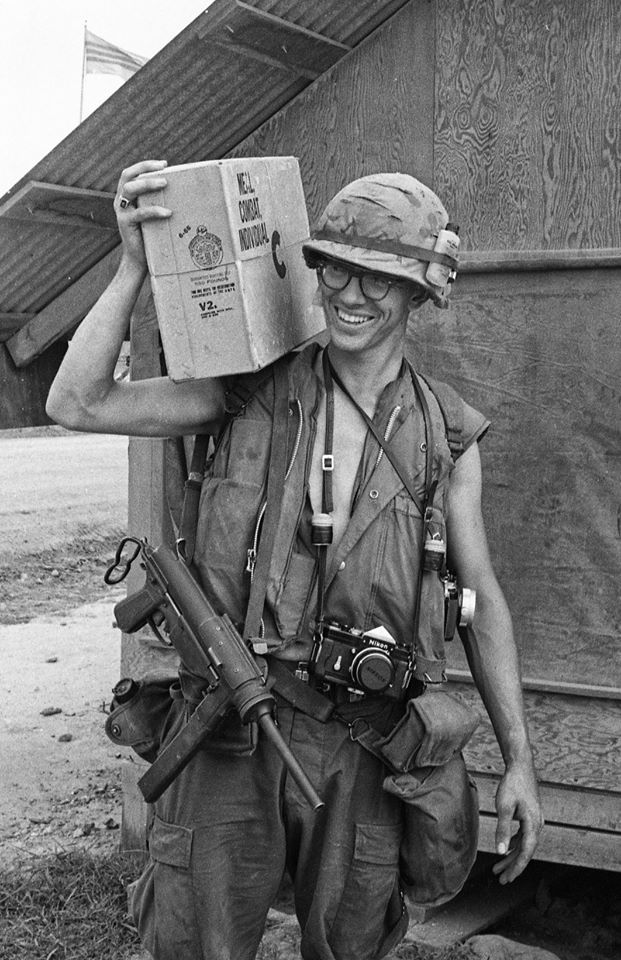
But something about that post burrowed into my subconscious, and later that day dug its way back out.
Gerheim…that’s an odd name. The only other place I’ve seen it was in a Vietnam novel called The Short-Timers by USMC vet Gustav Hasford. The main character was a Marine combat correspondent who winds up carrying a Grease Gun. And they’re in Phu Bai during Tet. And if I recall correctly, the guy named Gerheim was…
No way. It can’t be.
I jumped onto Facebook and reached out to Dennis Fisher. He confirmed that he did in fact serve with Hasford, as did Earl Gerheim. Fisher, Gerheim and I exchanged emails. Gerheim said Hasford used his name for two characters in the book, one of which was “Gunny Gerheim.”
You might know Gunny Gerheim.
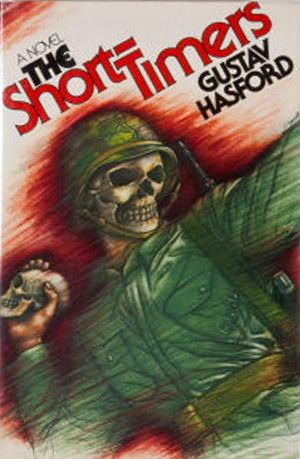
The Short-Timers was published in 1979 but adapted for a movie that hit the big screen in 1987. In the movie, Gunny Gerheim’s name changed to Gunny Hartman. As in, Drill Instructor Gunnery Sergeant Hartman, played by R. Lee Ermey, in a Stanley Kubrick flick called Full Metal Jacket. I had somehow stumbled into two of the Marines who helped inspire Gustav Hasford to write the book that became the movie that pushed thousands of ‘80s kids like me into the Marine Corps, and whose characters became icons of American culture.
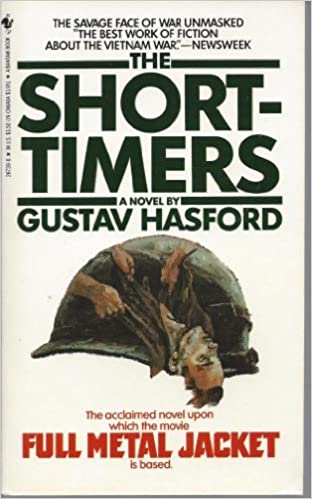
Full Metal Jacket is a classic American war movie. Who doesn’t know The Gunny? Who hasn’t shared a meme of Animal Mother? Who doesn’t know that only steers and queers come from Texas? Who hasn’t made a War Face? Who hasn’t said “Me so horny” to their significant other? Who doesn’t know “The first and last words out of your filthy sewers will be sir”?
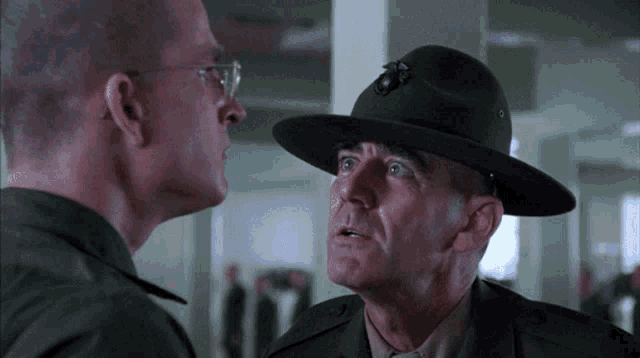
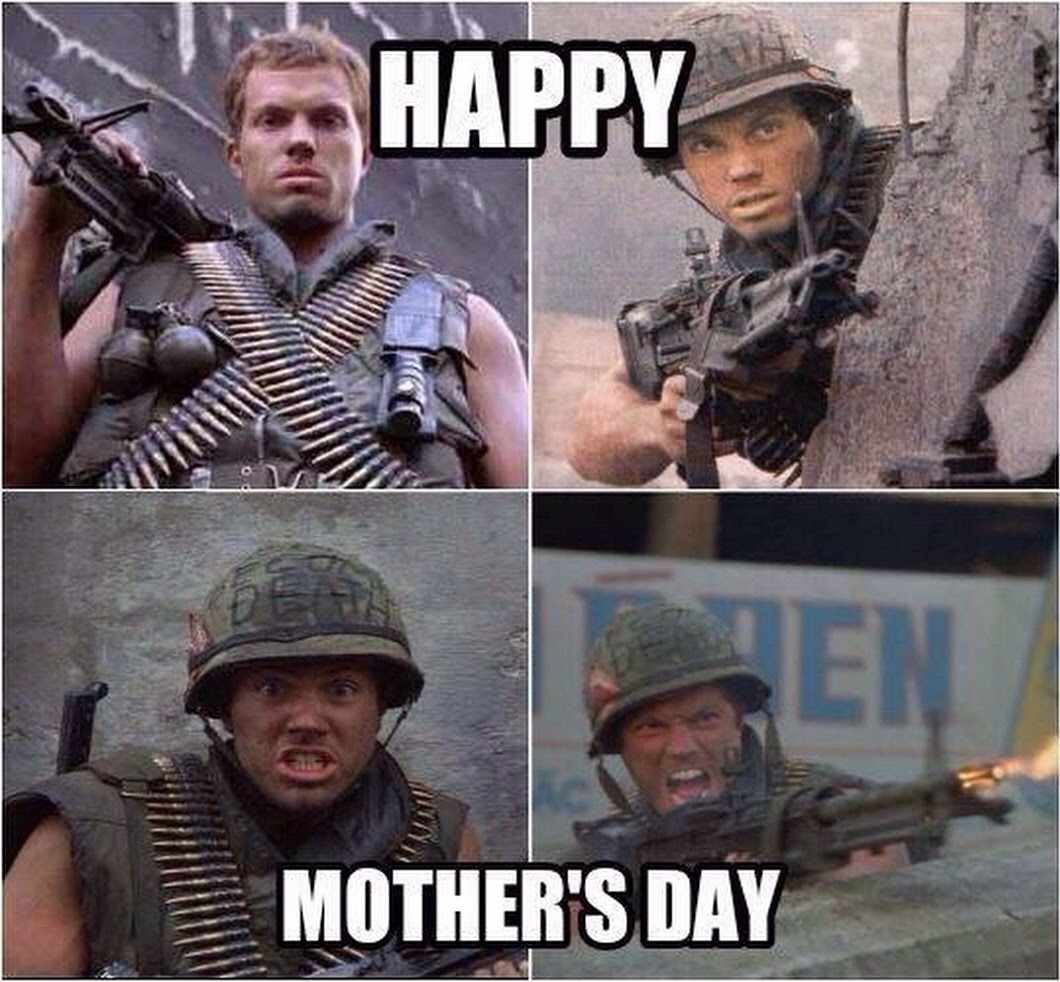
Actually, that last one tripped me up. I arrived at Marine Corps Recruit Depot San Diego on a bus one dark night 31 years ago, exhausted from being up a full day and disoriented from riding aimlessly an hour from the airport to the fabled Yellow Footprints – which were, by the way, right next to the damn airport. I watched in terror as a DI approached, and a nervous voice exclaimed: “Here comes Smokey!” The DI walked up the bus steps, gave stern commands, and asked if we understood. We replied in crisp unison, trained by Full Metal Jacket, “Sir yes sir!” The DI, probably exasperated from hearing it a thousand times before, responded, “It’s just yes sir.” And we scrambled off the bus, a little dejected.
A few days after making first contact with Marine combat photographer Dennis Fisher we had a long and interesting phone conversation, and I saw photos he’d taken in country. The next day I spoke with combat correspondent “Crazy Earl” Gerheim, who was likewise fascinating and full of information. Then Gordon “Cowboy” Fowler, a Marine combat correspondent turned successful artist. Then Steve Berntson, a go-to Snuffie known in Vietnam for his ability to round up a quart of gin as well as new jungle fatigues. Then Bob “Ding” Bayer, Hasford’s closest friend. Then Dale “Daddy D.A.” Dye, that Dale Dye, another Marine from that small group.
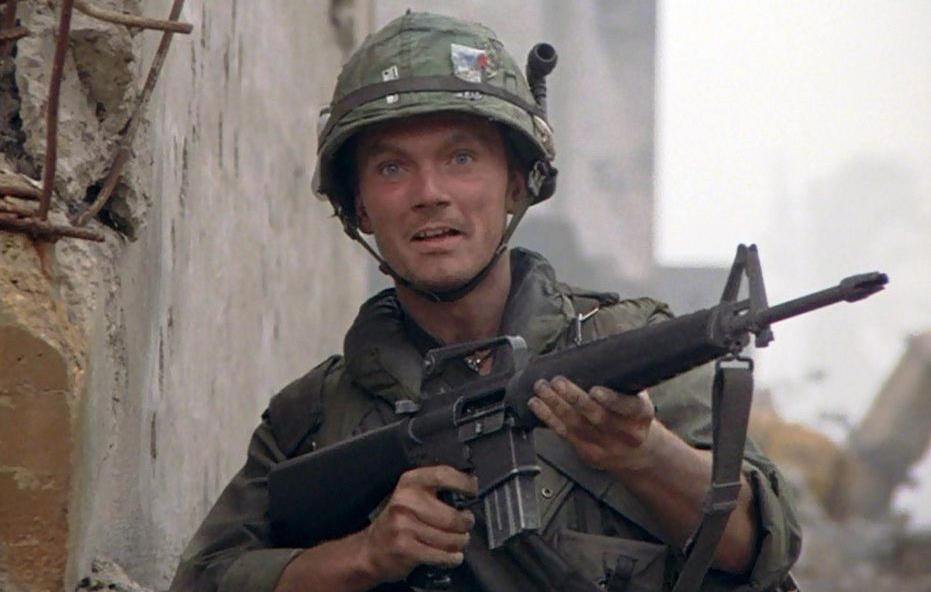
None bragged about themselves. All were eager to talk about Gustav Hasford, to ensure I understood his service, accomplishments, incredible intelligence, quick wit, and many, many eccentricities. Most of them loved the guy and generally called him Gus, sometimes pronounced “goose.” When I went other directions during interviews they’d often steer me back to Gus, which wasn’t exactly what I wanted. More on that later.
These men were the “Snuffies,” a small, tight-knit group of 1st Marine Division combat correspondents who served in “I Corps,” northern South Vietnam. They earned their pay by being pretty much a grunt with a notepad in line units (combat photographers like Dennis Fisher often went on missions with the Snuffies and remain close to some of them, but were in a separate unit). Their war was a curious anomaly, unique even in a conflict that had a thousand facets. There is no “standard” war experience; everything can change depending on where you are, what you do, and when you’re there. But the Snuffies experienced something far different than almost all other Marines, even those at the same places and same time.
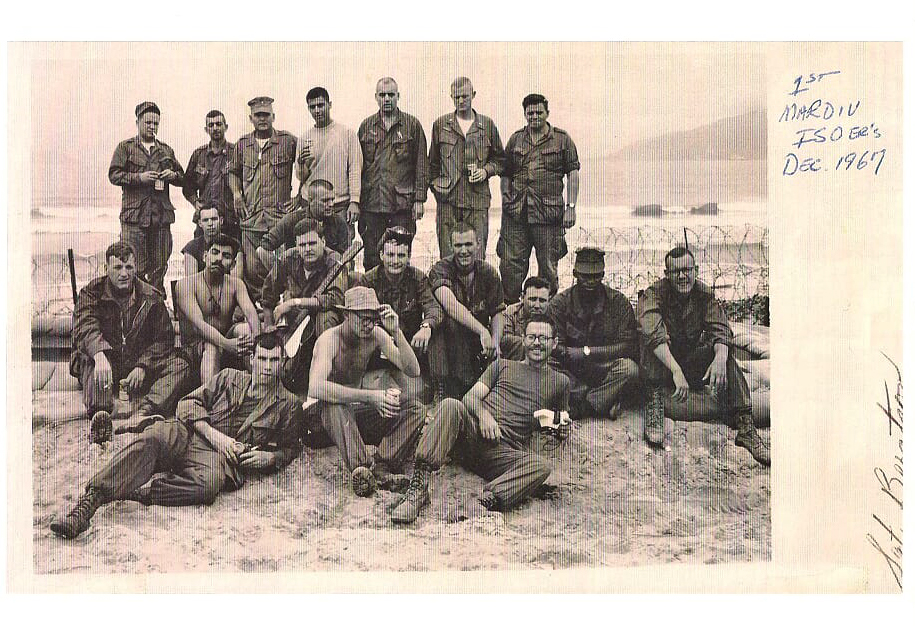
The Snuffies were smart; plenty of other Vietnam GIs were smart, but the Snuffies needed above-average intelligence to get their MOS in the first place and several were college-educated. A couple including Hasford had already worked as writers or at newspapers, and four very bright Marines who’d washed out of officer training were sent to the Snuffies. They were well-read, followed world news, and “had conversations that would have been really unusual in line units,” according to Dale Dye, a prior mortarman. They also had to prove themselves useful so the grunts wouldn’t consider them dead weight. “When we’d get hit, it was important that the grunts in whatever unit I was with thought of me as Fowler and not ‘that idiot from division we have to babysit,’” Gordon Fowler said. “They had to trust me to fight beside them, not just write stories about them.” Simply put, you couldn’t find your own way around Vietnam, gain the trust of the infantry, and write good stories if you were stupid.
Then there was the Snuffies’ freedom. They carried printed orders from the division commander ordering anyone available to transport them around I Corps, and could pick and choose which units to embed with. “If we had a bad experience with, for example, India 3/5,” Steve Bernston said, “we’d say ‘Hey, Kilo 3/5 treated us better, let’s go with them instead’.” As crazy as this sounds to Global War on Terror (GWOT) vets, sometimes they even hitchhiked between outposts to reach their assigned units. “There was a standing order to always pick up a hitchhiking Marine,” Gordon Fowler said. That almost got Fowler killed once when he was picked up by ARVN (Army Republic of Vietnam) Soldiers who took him to what he thinks was a VC village, and he had to walk back to the main road to catch an American ride.
Lastly, every other Vietnam Marine had a gigantic, chain-of-command-shaped thumb on their backs; the Snuffies, on the other hand, were semi-volunteers on every mission. They received assignments to go with the infantry on various operations, which didn’t mean they had to be up front, but the Snuffies were constantly up front anyway. “We weren’t walking point or anything,” Bob Bayer said, “but there was pressure from the other Snuffies to get into it with the line units. We had a reputation to uphold.” So they jumped from line unit to line unit in ones and twos but never as a group, and kept getting into firefights, and kept getting wounded, just so they could do a good job telling the line Marines’ stories. Even draftee Gordon Fowler, 23 and married with a child when his lottery number came up, willingly risked it all.
“We were young, intelligent, creative guys who felt it was our duty to tell the story of the kid carrying a rifle and pack, scared to death out in the bush,” Dye said. “There were two ways to do that. You could hang out at the command post and interview grunts as they came back from the field, or get out in the field with them. We all wanted to be out there with them, and hated the idea that anyone would call us a pogue [POG, Person Other than Grunt] or REMF [Rear Echelon Mother Fucker]. We were out so much the grunts usually referred to us as JARs, Just Another Rifle.” Some grunts, upon learning the Snuffies hadn’t been ordered to accompany them on patrols and operations, expressed amazement: “You’re here, and you don’t have to be?”
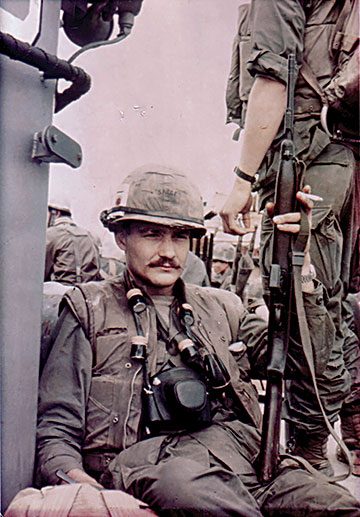
—————————————————————
You can read the article in its entirety here.

Chris Hernandez (pictured here making a War Face with one of his boys) is a 26-year police officer, former Marine and retired National Guard soldier with over 25 years of military service. He is a combat veteran of Iraq and Afghanistan and also served 18 months as a United Nations police officer in Kosovo. He writes for BreachBangClear.com and has published three military fiction novels, Proof of Our Resolve, Line in the Valley and Safe From the War through Tactical16 Publishing. He can be reached at chris_hernandez_author@yahoo.com or on his Facebook page (https://www.facebook.com/ProofofOurResolve).
Filed under: Writing | 7 Comments
Tags: Full Metal Jacket, Gustav Hasford, Snuffies, The Short-Timers, veteran writers, Vietnam, Vietnam War
Archives
- May 2022
- March 2021
- April 2020
- September 2019
- August 2019
- July 2019
- January 2019
- February 2018
- December 2017
- September 2017
- August 2017
- June 2017
- April 2017
- February 2017
- January 2017
- November 2016
- October 2016
- September 2016
- July 2016
- June 2016
- May 2016
- April 2016
- February 2016
- January 2016
- December 2015
- November 2015
- October 2015
- September 2015
- August 2015
- July 2015
- June 2015
- May 2015
- April 2015
- March 2015
- February 2015
- January 2015
- December 2014
- November 2014
- October 2014
- September 2014
- August 2014
- July 2014
- June 2014
- May 2014
- April 2014
- March 2014
- February 2014
- January 2014
- December 2013
- November 2013
- October 2013
- September 2013
- August 2013
- July 2013
- June 2013
- May 2013
- April 2013
- March 2013
- February 2013
- January 2013
- December 2012
- November 2012
- October 2012
- September 2012
- August 2012
Categories
Meta
Great and interesting article. So glad your back. Always loved your stuff. Semper Fi.
Very cool! I am of that era (73) but never in-country. We used “snuffy” to describe junior (LCpl and below) Infantry Marines of any type. Had no idea it was an actual group till now – or such a distinguished one.
What’s crazy is that so few people know about them. I’ve studied quite a bit of Vietnam War history, plus read The Short-Timers, and had no idea they existed. They should get their own movie.
There is still history to be written. I’ve known about Dale Due for some time and knew the Corps had correspondents and photographers in uniform (and in combat), but Hasford’s book was the only one I’d seen from one of them. Roth was an 03 and Huggett was an infantry officer, like Webb.
I had the fortunate experience of discussing “The Short Timers” and Hasford with R. Lee Ermey a few years ago. He was an interesting guy.
How did that happen, and how’d it go?
Really fascinating!
Chris, I have really enjoyed your work and I have learned a lot, especially as it involves police work.
I know this is off topic, but I would love to see an article from you on how to assist a police officer as a civilian, especially as an armed civilian. What should I do if I see an officer by himself wrestling someone to the ground and having trouble? What if I see an officer in a shootout, how should I respond as an armed citizen?
Anyway, thanks for everything you have written so far! I still go back and reread old articles you have written just to keep learning. Thanks!